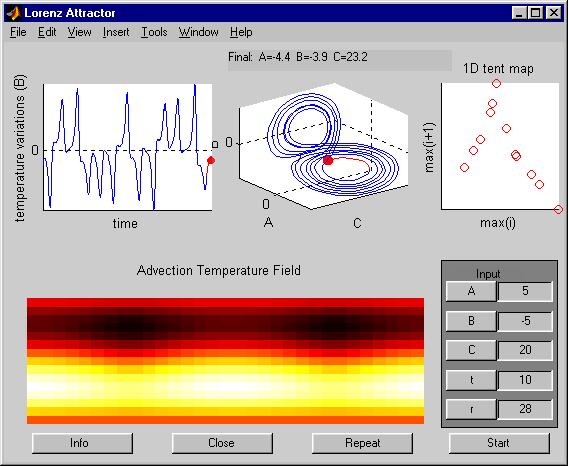SVETLANA PANASYUK
 Home Home
 Resume Resume
 Publications Publications
Medical Hyperspectral Imaging
 Basics Basics
 Device Device
 Diabetes Diabetes
 Wounds Wounds
 Cancer Cancer
 Shock Shock
Optical Metrology
 Defects Defects
 Medical Medical
 Automotive Automotive
Tissue Spectroscopy
 Fluorescence Fluorescence
 D-Reflectance D-Reflectance
 Device Device
Mantle Flow
 Convection Convection
 Drift Drift
 Geoid Geoid
 Compressibility Compressibility
 Inversion Inversion
 Topography Topography
 Phases Phases
 Superplasticity Superplasticity
 Hemisphere Hemisphere
GPS
 Tien Shan Tien Shan
 GPS GPS
 Sky Map Sky Map
 Errors Errors
Remote Sensing
 Vectors Vectors
 Satellites Satellites
Image Processing
 Deblurring Deblurring
 Registration Registration
 Recognition Recognition
Fun
 Geosystems Geosystems
 Colormap Colormap
 Chaos Chaos
 Bubbles Bubbles
 Harmonics Harmonics
Reference Earth Model
 about about
 data data
 map_view map_view
 slice slice
 isosurface isosurface
 rms rms
 correlation correlation
 vis5D vis5D
|
 |
 |
 |
 Chaos
came to my life when I decided to participate in preparation and assisted
teaching for the Geosystems class - part of my MIT EAPS Department new
Professional Master's Degree Program. Chaos
came to my life when I decided to participate in preparation and assisted
teaching for the Geosystems class - part of my MIT EAPS Department new
Professional Master's Degree Program.
I want to shear with you two models of chaos I explored: Driven Pendulum and Lorenz Attractor.
In spring 1996, listening the introduction of the chaos in solar system by
Jack Wisdom in terms of pendulums, I
decided to build a simple model of Driven pendulum. My older son, Sanya , offered his Lego
sets and took an active part building the model: here is photo of Sanya and the pendulum.
|
The pendulum (the gray stick at the bottom of the colorful column) is driven through the string (the black pipe
connecting the pendulum and the blue stick at the top of the colorful colunm) by the sinusoidal vertical motion.
We simulated the sinusoid by attaching the blue stick to the wheel which rotates by the Lego motor through the set
of gears (you won't see them because they are hidden at the top of the colorful column.)
The system displays all major stages of the chaotic system. We regulate the driving frequency by changing
the angular speed of the wheel through the Lego motor controls. In the low input energy (slow wheel rotation) the
pendulum returns to the vertical hang from any initial conditions. At the high energy - it rotates with full
circle around and around (another steady state). At the moderate energy the pendulum swings back and forth, up and
down. Sometimes it looks like ready to stop, but next moment it swings even more. So the chaos is there! |
 |
It's hard to describe, so stop by Jack Wisdom's office (we gave this "toy" to him for his class) and look
yourself! Or try to build it - it's fun!
Lorenz Attractor is a chaotic system first described by Edward Lorenz of MIT in 1963. The system is
ideal for investigation of a simple chaotic system behavior!
I coded it in MATLAB to facilitate the chaos
exploration: it integrates the three coupled nonlinear differential equations that define the 'Lorenz Attractor'
and shows the demo. As the integration proceeds you will see:
a point moving in 3-D parameter space (top left plot),
a point in the time-temperature axes, or a tent map (top right plot), and
temperature accociated with the advection: difference between actual temperature and
temperature in the absence of convection (center plot).

Depending on the initial conditions and Rayleigh number value, the system will show most stages of a chaotic behavior.
By changing the Rayleigh number relative to its critical value (which equals to 657.5 for the onset of thermal convection
in a fluid layer heated from below), you will find regimes of:
- no motion (conductive heat transfer);
- unstable zero attractor together with stable clockwise or counter-clockwise flows;
- unstable transient chaos together with stable clockwise or counter-clockwise flows;
- three possible stable attractors: chaotic attractor, clockwise, and counter-clockwise flows;
- clockwise and counter-clockwise flows become unstable but the chaos is stable;
- Lorenz Chaotic Attractor is stable;
- limit cycles appear at high Rayleigh numbers.
References
- Lorenz, E.N., Deterministic non-periodic flow, J. Atmos. Sci., 20, 130-141,1963
- Ott, Edward, Chaos in dynamical systems, Cambridge University Press,1993
This code was modified from lorenz.m MATLAB-file by me for educational purposes
of MIT class on GeoSystems, 1996.
Since so many people have contacted me asking for the code, I've decided to place it
here. You could use the code as is, but please honour the authorship.
|
|
 Chaos
came to my life when I decided to participate in preparation and assisted
teaching for the Geosystems class - part of my MIT EAPS Department new
Professional Master's Degree Program.
Chaos
came to my life when I decided to participate in preparation and assisted
teaching for the Geosystems class - part of my MIT EAPS Department new
Professional Master's Degree Program.

